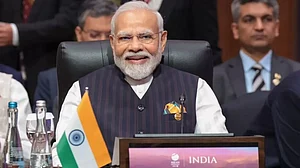
Name: Indian Railways
Indian Railways is a statutory body under the ownership of the Ministry of Railways of the Government of India that operates India's national railway system. As of 2023, it manages the fourth largest national railway system by size with a track length of 132,310 km, running track length of 104,647 km, and route length of 68,426 km, of which 63,456 km is electrified. With over 1.2 million employees, it is the world's ninth-largest employer and India's second-largest employer.
In 1951, Indian Railways was established by amalgamating 42 different railway companies operating in the country, spanning 55,000 km. The railway network across the country was reorganized into six regional zones in 1951-52 for administrative purposes, gradually expanding to 18 zones.
The first steam-operated railway was introduced in 1837 in Madras, with the first passenger train operating in 1853 between Bombay and Thane. In 1925, the first electric train ran in Bombay on DC traction. The first locomotive manufacturing unit was commissioned in 1950 at Chittaranjan, and the first coach manufacturing unit was set up at Madras in 1955.
Indian Railways runs various classes of express, passenger, and suburban trains. In 2018-19, it operated 13,523 trains on average daily, covering 7,325 stations and carrying 8.44 billion passengers. Indian Railways also operates different classes of rail freight transport. In 2022-23, it operated 8,479 trains on average daily and transported 1418.1 million tonnes of freight. Indian Railways operates multiple classes of rolling stock manufactured by self-owned coach-production facilities. As of March 2022, Indian Railways' rolling stock comprised 318,196 freight wagons and 84,863 passenger coaches. As of December 2023, Indian Railways had 10,238 electric and 4,543 diesel locomotives, among others.
In 1832, the proposal was proposed to construct the first railway line in India at Madras. In 1835, a railway track was constructed between Red Hills and Chintadripet in Madras and became operational in 1837. It was hauled by a rotary steam engine imported from England and was used for ferrying granite. The Madras Railway was established in 1845, and the Great Indian Peninsular Railway was incorporated in 1849. Temporary railway lines were built, such as the railway line at Dowleswaram built by Arthur Cotton to supply stone for the construction of a dam over the Godavari River in 1845 and the Solani aqueduct railway built by Proby Cautley in Roorkee to transport construction materials for an aqueduct over the Solani River in 1851. In 1852, a steam locomotive imported from England was tried at Byculla. In 1853, the first passenger train on broad gauge ran for 34 km between Bombay and Thane, which had 14 carriages carrying 400 people, hauled by three steam locomotives: the Sahib, Sindh, and Sultan.
The Thane viaducts, the first railway bridges, were built over the Thane Creek when the Mumbai-Thane line was extended to Kalyan in May 1854. Eastern India's first passenger train ran 39 km from Howrah, near Kolkata, to Hoogly on 15 August 1854. The construction of the first main line in the South between Royapuram in Madras and Arcot started in 1853 and became operational on 1 July 1856. On 24 February 1873, a horse-drawn 3.8 km tram opened in Calcutta between Sealdah and Armenian Ghat Street. On 9 May 1874, a horse-drawn tramway began operation in Bombay between Colaba and Parel. In 1879, the Nizam's Guaranteed State Railway was established, which built railway lines across the then Hyderabad State from Kachiguda. In 1877, an Ajmer-built F-1/734 steam locomotive became India's first indigenously built locomotive. In 1897, lighting in passenger coaches was introduced with Jodhpur Railway, the first to introduce electric lighting as standard fixtures.
The first railway budget was presented in 1924. On 3 February 1925, the first electric train ran between Bombay and Kurla, hauled by an SLM electric locomotive on DC traction. In 1925, the first multiple electric units were introduced in Bombay, with 1500 V DC units imported from Cammell Laird and Uerdingenwagonfabrik. Chennai suburban railway started operating in 1931 with a single metre gauge line from Chennai Beach to Tambaram. Between 1925 and 1944, the government took over the management of the railway companies in the British presidencies and provinces.
In 1950, about 42 railway companies operated about 55,000 km of tracks across the country. These railway companies were amalgamated in steps to form a single entity named Indian Railways. In December 1950, the Central Advisory Committee for Railways approved the plan for reorganizing Indian Railways into six regional zones, with the Southern (14 April 1951), Central (5 November 1951), and Western (5 November 1951) zones being the first to be created. In 1952, fans and lights were mandated for all compartments in passenger trains, and sleeping accommodations were introduced in coaches. North British Locomotive Company fabricated the first diesel locomotive in India in 1954.
The first locomotive manufacturing unit at Chittaranjan was commissioned in 1950. The first rail coaches were manufactured in India in 1956 when the Integral Coach Factory was established at Madras. In 1956, the first air-conditioned train plied between Howrah and New Delhi. In 1957, Indian Railways adopted 25 kV AC traction, with the first runs beginning in December 1959 with the WAM-1 locomotives. The first containerized freight rail transport began between Bombay and Ahmedabad in 1966. In 1969, the Government of India announced the introduction of a new express train capable of reaching speeds of up to 120 km/h in the railway budget, and the first Rajdhani Express was flagged off from New Delhi to Howrah in March 1969. In 1974, Indian Railways endured a 20-day strike. The first metro rail was introduced in Calcutta on 24 October 1984.
In 1986, computerized ticketing and reservations were introduced. In 1988, New Delhi and Jhansi introduced the first Shatabdi Express. Two years later, the first self-printing ticket machine was introduced in Delhi. In 1993, air-conditioned three-tier and sleeper classes were introduced. In 1995, Chennai MRTS became India's first operational elevated railway line. A centralized computer reservation system was deployed in Delhi, Mumbai, and Chennai in September 1996, coupon validating machines were introduced at Mumbai CSMT in 1998, and the nationwide concierge system began operation on 18 April 1999.
The Indian Railways website went online in February 2000. Indian Railways Catering and Tourism Corporation (IRCTC) was incorporated in 1999, and online ticketing was introduced on 3 August 2002 through IRCTC. In 2015, the first Compressed Natural Gas-powered trains were rolled out. Since 1925, the Railway budget was presented before the Union until 2016. The central government approved the merger of the Rail and General budgets in 2017. On 31 March 2017, Indian Railways announced a target of electrifying the entire rail network by 2023. In March 2020, Indian Railways announced a nationwide shutdown of passenger service to combat the COVID-19 pandemic in India, with freight operations continuing to transport essential goods. The railways resumed passenger services in a phased manner in May 2020.
Starting in the 2010s, various infrastructure modernization projects have been undertaken, including high-speed rail, redevelopment of 400 stations, doubling tracks to reduce congestion, refurbishing of coaches, GPS-enabled tracking of trains, and modernization of locomotives. In 2018, a semi-high-speed self-propelled train set capable of reaching over 160 km/h was rolled out from ICF, and the Vande Bharat Express was launched in 2019. Indian Railways announced plans to become a net-zero carbon emission railway by 2030 and has implemented rainwater harvesting at stations, reforestation along the tracks, introduction of solar-powered trains, installation of solar and wind power generation facilities, and sustainable LED lighting at all the stations. Indian Railways removed all unstaffed level crossings by 2019, replacing staffed level crossings by bridges. Other safety projects include extending an automated fire alarm system to all air-conditioned coaches and GPS-enabled Fog Pilot Assistance System railway signalling devices. In 2020, Indian Railways allowed the operation of private passenger trains for the first time, with the first train flagged off from Coimbatore in June 2022.
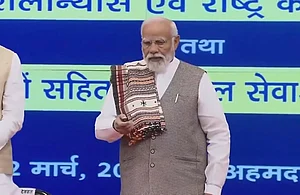
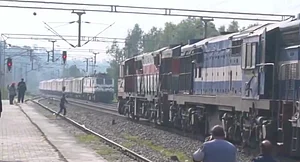
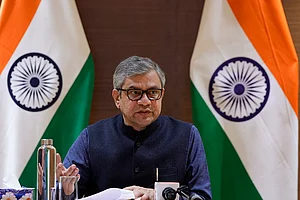
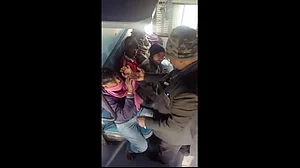

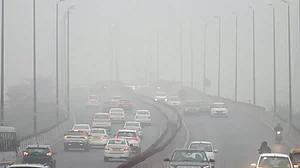

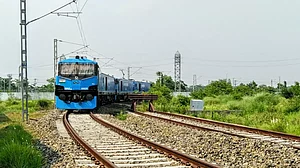

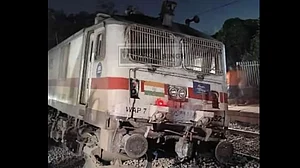
.jpg?auto=format%2Ccompress&fit=max&format=webp&w=300&dpr=1.0)
